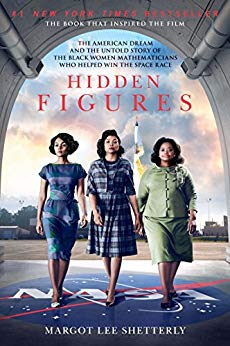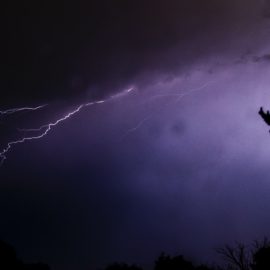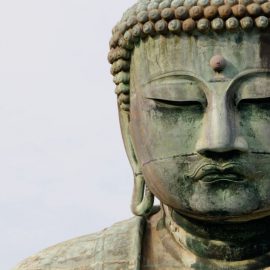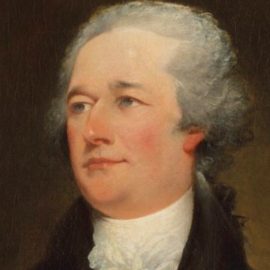

This article is an excerpt from the Shortform summary of "Hidden Figures" by Margot Lee Shetterly. Shortform has the world's best summaries of books you should be reading.
Like this article? Sign up for a free trial here .
What started the Space Race? What did it have to do with the Cold War, and was Sputnik really the beginning?
Many consider the launch of Sputnik by the Soviets to be the official beginning of the Space Race. The Space Race was defined by the race to the moon between the United State and the Soviet Union. Many people worked towards the goals of the Space Race at NASA, including Hidden Figures character Katherine Johnson.
The Dawn of the Space Race and the Space Task Group
On October 5, 1957, the Soviet Union successfully launched the Sputnik satellite into orbit, inaugurating the Space Race era of the Cold War and sparking a major panic among both American policymakers and the general public. All across the US, people with shortwave radios tuned in to hear the tiny satellite’s telltale “beep beep” and organized observation parties to watch Sputnik as it traveled through space.
It was a deeply humbling moment for the West: the Russians had beaten the Americans into space. Had American technology fallen behind that of the Soviets? And if so, what did that mean for the future security of the self-styled “free world?” Many feared that the Soviet Union’s ability to launch the satellite proved that they must be in possession of a vast arsenal of intercontinental ballistic missiles capable of raining destruction down upon American cities. The Sputnik Space Race event was terrifying and mesmerizing.
Once again, the urgency of the Cold War brought the absurdity of segregation to light. If Sputnik represented a true national crisis, then why were black Americans being denied the opportunity to fully serve their country? The US was leaving untapped the intellectual resources of a large part of its population, in service of a ridiculous and morally indefensible commitment to racial apartheid (while also handing the Soviet Union a major propaganda talking point). While Americans were devoting their energies to keeping black children off high school and college campuses, the Soviets were working vigorously to make sure that all their children received the best possible education. In fact, one-third of Soviet engineering undergraduates were female. In this way, the Sputnik Space Race events shed light on social inequality.
NASA assembled a brain trust at Langley, called the Space Task Group. This was a semi-autonomous working group, composed mainly of engineers from Flight Research and PARD. Their mission, codenamed Project Mercury, was to launch a manned craft into orbit, research the effect of space travel on humans, and ensure safe reentry to Earth of both the astronaut and the spacecraft. This was one of the first orders of business in the race to the moon.
Katherine’s workspace was abuzz with talk of space. NASA’s top engineers from Flight Research and PARD were discussing orbital mechanics, rocket propulsion, reentry, solar system physics, and trajectories. Katherine hung on every word of these discussions, angling for every opportunity she could get to hear even snippets of conversation. She yearned to be part of these meetings and conversations and knew that she had valuable skills to offer to the Space Race and the eventual race to the moon.
Langley presented engineers with a grueling research review process. To get a technical report published, an engineer needed to present it at an editorial meeting, during which a committee of subject matter experts would review and scrutinize every detail of the report while grilling the researcher on the soundness of the information within it. The committee was thorough (and often quite harsh) in rooting out inconsistencies and poorly reasoned conclusions. The whole process could take months, even years.
NASA Expands
With the expanded scope of NASA’s mission, the influx of new personnel and funding, and the enormous public attention on the agency’s activities, American policymakers began to see that NASA was getting too big for Hampton Roads and Langley. The government explored options for a new base of operations, one which would have the right mix of warm climate, cheap land, and friendly politicians. The Space Race/Cold War era was ripe with opportunities, and NASA seized upon them.
With much influence and lobbying from Vice President Lyndon Johnson (a Texan who had deep political connections from his time as Senate Majority Leader and would soon be president himself after Kennedy’s assassination), NASA decided to move the bulk of its space operations to Houston. This meant that the men and women of Langley would face difficult personal and professional decisions.
Katherine Johnson chose to stay in Virginia. After all the changes and tumult in her children’s lives over the past few years, she couldn’t uproot them to Texas. She still would make highly valuable contributions to NASA and the Space Race/Cold War era, but she would be doing it away from the true nerve center of the agency in Houston.
The Space Race was a defining time in American history. The Space Race/Cold War era was one of fear, hope, and innovation. The Sputnik Space Race kickoff was part of what started the Space Race, but for dedicated NASA employees like Katherine Johnson, it was also a chance to prove what she could do.

———End of Preview———
Like what you just read? Read the rest of the world's best summary of Margot Lee Shetterly's "Hidden Figures" at Shortform .
Here's what you'll find in our full Hidden Figures summary :
- How brave black women were instrumental to the American space race
- How they confronted racism and sexism to forge a better future
- Their enduring legacy in American history






